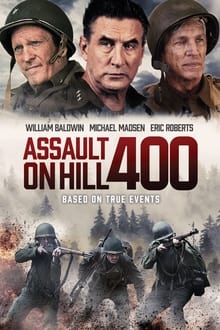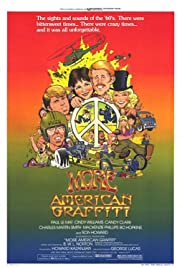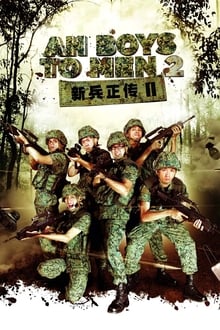
On November 14, 1944, the 2nd Ranger Battalion is tasked with sieging the German town of Bergstein, and Hill 400, a highly strategic position that provides the Reich with high ground for artillery.
You May Also Like

A WWII film set on a Pacific island. Japanese and allied forces occupy different parts of the island. When a group of British soldiers are sent on a mission behind enemy lines, things don’t go exactly to plan. This film differs in that some of the ‘heroes’ are very reluctant, but they come good when they are pursued by the Japanese who are determined to prevent them returning to base.

College graduates deal with Vietnam and other issues of the late ’60s.

In the final days of World War II, occupying Japanese forces in the Philippines face resistance from the local population and the American offensive. The dwindling Japanese soldiers attempt to survive through the horrors of war.

They grew up under the Nazi regime. They pledged to give their lives for Hitler. They were fanatics who would not be stopped. They were the 20,000 teenagers who made up the 12th SS Panzer Division. Unleashed in France to halt the …

A dramatization of one man’s rescue of Jewish refugees in the Nazi-occupied Polish city of Lvov. In Darkness tells the true story of Leopold Soha who risks his own life to save a dozen people from certain death. Initially only interested in his own good, the thief and burglar hides Jewish refugees for 14 months in the sewers of the Nazi-occupied town of Lvov (formerly Poland).

During World War 1, the young Boudreau sisters decide to aid the war effort by catching spies. The strange activities of Nobel-Prize winning scientist Marie Curie make her a prime suspect. When the girls follow Curie to the battlefront, they witness her fight to use science and her X-ray machine to save the lives of the wounded, including their father.

In 1934, Bolivia is at war with Paraguay. Liborio and Ticona and other Bolivian indigenous soldiers are lost in the hell of the Chaco, under the commandment of German Captain Kundt. They’re looking for the Paraguayan enemy that they haven’t seen for months, and that they will never find. They leave together in a search that will make them realize, progressively, the destiny they have been pushed into and the inevitable condition of a defeated troop. They’re walking like shadows, wandering forever in the middle of dust and silence.

In October of 2016 the battle for Mosul, the Islamic State’s self-proclaimed capital in northern Iraq, began. With unprecedented access, Bernard-Henri Lévy and his team follow the Kurdish units and the Iraqi special Golden Division. From street to street, they fight together to regain this city of two million inhabitants. Though successful, the hopes of the Kurdish fighters might not always align with those of their allies.

Director John Barnwell’s 1959 WWII drama stars Keith Andes as an American soldier in the Philippines who trains a village of headhunters to fight the Japanese. Also in the cast are Susan Cabot and Paraluman.

April 14, 1865. One gunshot. One assassin hell-bent on killing a tyrant, as he charged the 16th President of the United States. And in one moment, our nation was forever changed. This is the most dramatic and resonant crime in American history: the true story of the killing of Abraham Lincoln. From Executive Producers Ridley Scott and Tony Scott, and narrated by Tom Hanks, National Geographic Channel’s first ever docudrama, Killing Lincoln, based on the New York Times bestseller, combines re-creations with historical insight in a thrilling chronicle of the final days of President Lincoln and his assassin, John Wilkes Booth.

Ken is quick to adopt a change in personality by becoming an “on-the-ball” recruit, even more so than “Wayang King” Aloysius. Differing viewpoints sour the friendship between Ken and Lobang. Meanwhile, Ken’s father has become partially paralyzed because of his stroke but is determined to make a recovery. After booking out, Aloysius seeks advice from his parents as he feels excluded from the group; his father (Chen Tianwen) tells him the best solution is not to do anything. Back at Tekong, Recruit IP Man learns about “Real Bullet” Zhen Zidan (Benjamin Mok), an “Ah Beng” who stole his girlfriend Mayoki (Sherraine Low). IP Man hits back by criticizing Mayoki for her inferior qualities.

As members of ESWAT, the elite forces serving Olympus, Deunan and Briaereos they are deployed everywhere trouble strikes. Olympus finds itself under a stealth attack – cyborg terrorism, deadly nanotech zealots, and rioting citizens are just some of the threats that Deunan must contend with as she fights to save Olympus!